Though apples are now a major segment of the fresh-cut produce category, other tree fruits have been noticeably absent, and with good reason.
Pears, peaches, nectarines, and plums have a host of unique challenges that have, until recently, stymied most food processors.
Pears present slicing difficulties because fruit shape is oblong and the neck is narrow. Peaches and nectarines have a hard pit and need to be firm enough yet still sweet. And, there are hundreds of varieties of stone fruit instead of a dozen or so major cultivars in the apple industry.
Kim Gaarde, president of Fresh Fruit Cuts, based in Fresno, California, came up with the idea of fresh sliced peaches and nectarines while attending a national fresh-cut produce convention about ten years ago.
While there with her husband, Eric, who was attending on behalf of his company Gaarde FoodSource and Service, Inc., she noticed none of the exhibitors had fresh-cut stone fruits.
“She started talking to me about doing fresh-cut, sliced peaches and nectarines,” Eric told Good Fruit Grower. “I thought she was nuts and told her I wanted nothing to do with the idea.” Others shared his sentiment and told her it was impossible.
Kim pursued the idea anyway.
Fruit Dynamics, Inc., a sister company to Gaarde FoodSource, was a key part of the research and development she conducted to identify suitable cultivars with the right sugar-to-acid ratio, firmness, and shelf life. Eric initially established Fruit Dynamics so he could test fruit for Brix, acids, and other fruit quality parameters when a major client requested that fruit for baby food meet certain fruit specifications.
Pangaea, the cultivar management arm, helped Kim search the globe for potential fresh-sliced varieties.
“It spins my brain to remember what went into the R & D for the fresh-cut peaches and nectarines,” said Kim, who likened the product’s success to having six planets align perfectly. “I had to find the right varieties that had the flavor profile I’m looking for and that also work for fresh-cut. Then I had to develop a processing technique and package that preserved fruit quality.”
Unlike fresh-cut apples—which can come from fruit stored for months before processing and involve just a few key varieties—peaches and nectarines need a range of early-, mid-, and late-season cultivars that have the right attributes of flavor, firmness, shelf life, color, and availability.
She estimated that only 20 percent of the some 400 stone-fruit varieties currently grown in the United States are candidates for fresh-cut peaches and nectarines.
“The majority don’t have the quality and shelf-life attributes needed for a fresh-cut product,” she said. “I work with a very narrow variety list.”
The stone fruit variety mix also constantly changes. Cultivars can go out of date and become obsolete within a decade.
Some varieties that initially worked great for fresh cut are no longer grown commercially, she says. “Just the sheer number of stone fruit varieties available in a 26-week period in one hemisphere is huge. Add the southern hemisphere varieties to the mix, and it can be overwhelming.”
When you factor in the growing use of proprietary varieties, the list of available cultivars gets shorter and shorter, she says.
Initially, Kim focused on commercially available varieties. Now, she works closely with Pangaea, the cultivar management company, and plant breeders around the world who are developing new varieties. She has a “secret list” of selections still in the breeding development process that she is testing for fresh-cut potential.
Adapting technology
In addition to the challenges of identifying appropriate varieties, Kim had to find and adapt equipment for coring and slicing. Being a trailblazer has its drawbacks when seeking equipment for a use that others haven’t yet developed.
She’s evaluated all kinds of fruit processing technology, from equipment used in IQF (individually quick frozen) and canning to fresh-cut technology. “It’s a challenge to slice stone fruit without running into the pit,” she said, and added that slicing equipment had to be adapted for stone fruit. “But we have very skilled slicers who do an amazing job and have become very efficient.”
Although Kim constantly looks for new technology to improve slicing efficiencies and make slices more curved, for now she works with what she has.
Her daughter Brittnie (Gaarde) Hammack, the company’s food safety director, also helps with facility operations.
“When we started, Brittnie and I had zero fruit processing experience. Overnight we became food processors,” said Kim. “We had a crash course in equipment, technology, and processing in a food safe environment. We had to learn about stainless steel, machinery, assembly lines, and terms new to us, like SSOPP (sanitary standard operating practices and procedures) and HACCP (hazard analysis of critical control points).”
Super clean
The majority of processing activity at Fresh Fruit Cuts takes place in an ultra-sanitized room dubbed the “clean room.”
Fruit is brought into the room and put through a sanitizing wash bath before it is sliced and submerged in an antioxidant solution to preserve freshness and prevent browning. The solution is similar to the calcium sorbate solution used in fresh-cut apples. Fruit are then sliced, sorted, and packaged in the clean room before being conveyed out of the room and readied for shipping.
Hammack is a stickler when it comes to food safety. Those entering the clean room must be fully suited in hairnet, smock, and gloves and step in a vat with solution to sanitize footwear. No exceptions are made, even for visitors.
“I routinely check employee adherence to hygiene rules each week. I do things like watch to see if hand washing protocols are followed,” she said. “If the facility is idle for a day, I have it re-sanitized before we start up.”
Hammack conducts weekly environmental testing and uses a special hand-held meter to test daily for ATP (adenosine triphosphate), a universal molecule found in all animal, plant, bacteria, yeast, and mold cells. “The instant-read ATP meter lets me know if there is organic matter present,” she said.
Kim added that due diligence is their best form of recall insurance. “We go overboard on food safety, but I have confidence in the procedures we have in place and that procedures are followed and executed.” •

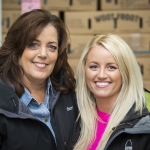
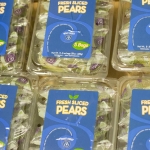
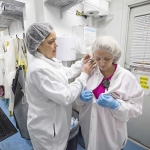

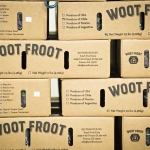
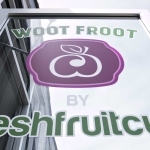





Leave A Comment